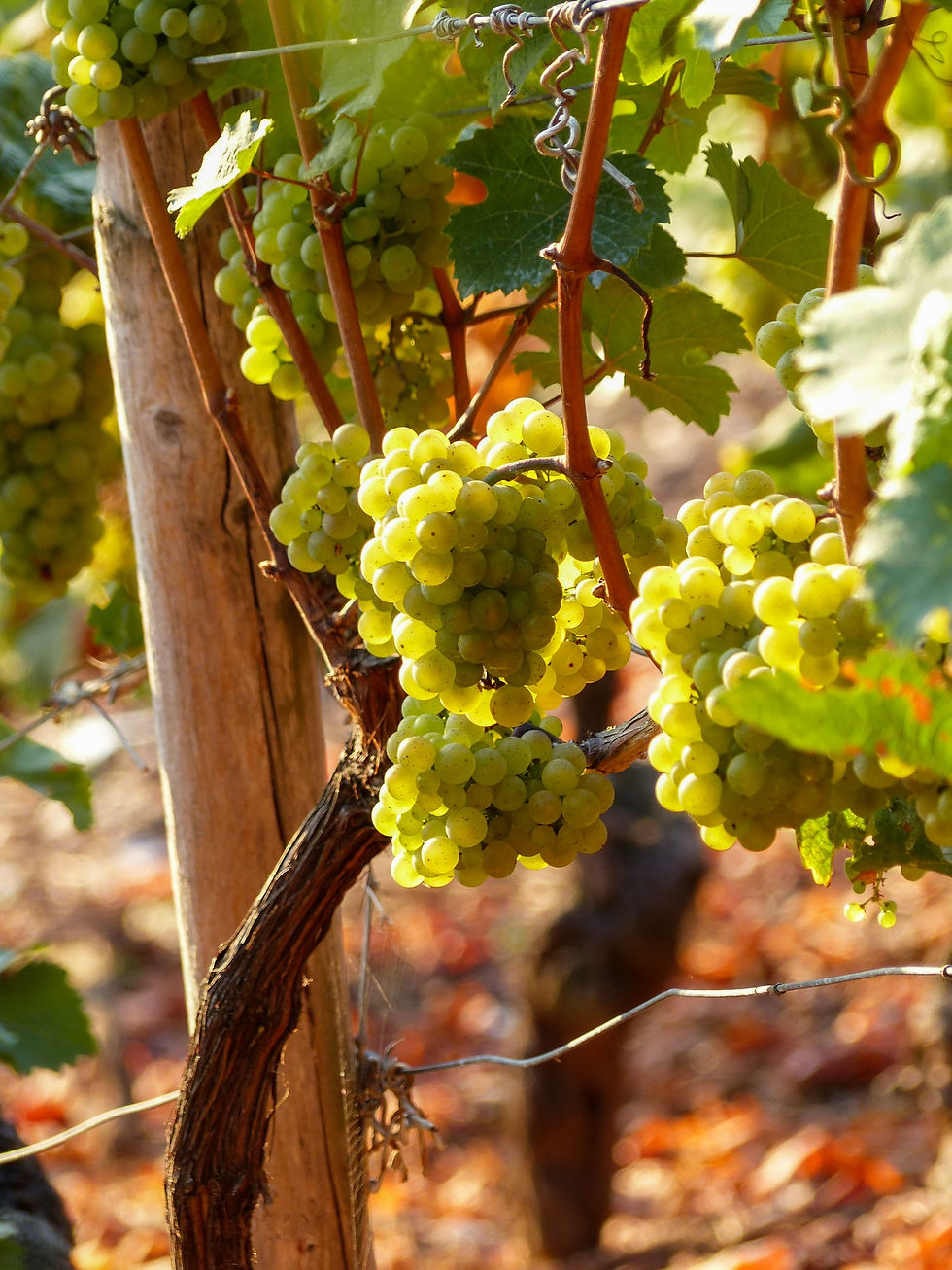Fermentation Friday™: The Artisans Of Ice Wine
- Robin Bacon
- Nov 17, 2023
- 3 min read
It takes a great deal of labor and love to make ice wine. When you have it with dessert, you miss the point of enjoying it on its own. - Author: Alpana Singh

Leaving The Detroit International Airport, one can see Canadian and American flags flying in unison across the Detroit River to Windsor, Ontario. 2017 was a memorable summer for me and my family. We had five trips on the docket, one of which was an adventure to Ontario, Canada, and the surrounding agricultural areas. Not only was this trip a family experience for us, but it was one for my personal research archives; I set out to learn about Ice Wine (Eisewine -German Derivation) and how levels of Brix in winegrapes must be reached before they are harvested during the first freeze. Winemakers shared stories of their projects, offered tastings, and their perspective on why they grow Vidal Blanc and Cabernet Franc for their product.

I was introduced to Ice Wine with a colleague, Dave Craig, a lifetime ago. We attended a luncheon in Vancouver with some bright analysts who invested in a few vineyards in Ontario. We were in town for a conference on the waterfront and decided to go winetasting that evening with our hosts. I couldn’t believe that these wines all started with a dry finish, and then apples and honey came through like a Fall harvest, and maybe even some lavender. Without this experience, I would have only known about later harvest applications from the Western Region of the U.S. and Canada.
Winegrape Varietals
Driving out of the United States from Detroit, take Route 3, Talbot Trail Road, heading toward Ontario. Once you get past London, the windmills are an ecosystem of their own; they power farms and municipalities along Lakes Erie and Ontario. Once you enter the Niagra Region, you are surrounded by wheat farms, industrial greenhouses appearing two stories tall, and vineyards that tend to reach into city limits. Ice Wine is mainly produced from Reisling and Vidal Blanc varietals, grown along the Ontario, Niagra Region. Some researchers think Ice Wine accidentally came from a sudden climate change; trying to salvage their crops, vintners quickly harvested the lot and crushed exceptionally sweet grapes, 35-39 Brix because botrytis is a practice using Riesling Grapes during noble rot, not the freezing of grapes. Canada is the second-largest producer of Ice Wine, Germany being first. The wine grapes used are derived from both Germany and France.

Vidal blanc winegrapes are French-American Hybrids, also known in France as Vidal 256. This varietal is popular amongst winegrape growers in the Northeast United States when making Ice Wine. It is a dry and acidic winegrape, and when used to make Ice Wine, the winemakers like to see a 35-39 Brix. Vidal blanc was obtained by Jean-Louis Vidal (Charente, France). This hybrid results from the crossbreeding of Ugni blanc and Rayon d’Or (4986 Seibel). Riesling B is known to be from the banks of the Rhine River. France categorizes Resiling wine grapes on the A-List, and America categorizes it on B. Riesling, during its end-of-season, noble rot produces beautiful wines. Cabernet Franc, originally from the Bordeau Region of France, is less resistant to grey rot and is crossbred to make a Merlot wine grape.

Winemaking
Winemakers are continuously monitoring their crops through scientific means; as soon as the temperature dips to -8 Degrees Celcius, it is time to harvest. Harvest usually occurs sometime between late November and mid-January. The wine grapes freeze on the vine; they are cut and processed through the wine press immediately to yield optimal residual sugars. The fermentation process takes two to three months, and bottled within ten months. Ontario offers three regions that support Ice Wine: The Niagra Region, Prince Edward County, and Lake Erie North Shore. There are over 50 wineries in Ontario producing delicious Ice Wine.

%20%20top%20vie.jpg)
Коментари